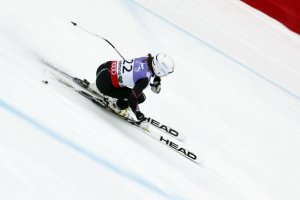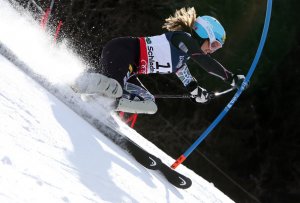This will be my 35th season teaching skiing. Started as a small local resort then moved to top five destination resort, been there for over 30 seasons. Thought I might put down a few thoughts. I'm glad to hear what you think about my ideas but don't be offended if I don't respond a lot. I'm old, ornery and a little burned out after 20+ years of talking about skiing on line.
I guess I'll start with what I teach now.
A big share of my time is spent with adults who already ski. This is nice because they are moving forward they may have the brakes on but they are moving and I can work with that. On the easiest terrain available I will show them how to flatten one foot or the other and discover that they go in that direction. Flatten left go left, flatten right go right. I make sure that they understand that they don't weight that foot just flatten it. For those still skiing in a wedge that may be enough for more advance skiers flatten becomes Roll the Sole where the skier feels their foot roll across the sole from the big toe side to the little toe side. I'll point out that all we are doing is letting go of the snow with that foot (I'm teaching a release) and encourage them to feel how we naturally begin to ride on the other ski, actually on the big toe side of that foot. As we ski around I start to use ride ski and guide ski for the differing roles of the skis. Learning/exploring Ride and Guide is more than enough for the first lesson.
A little aside here. I've been using the phrase 'Ride and Guide' from before the advent of shaped skis. Back then it was right points right go right for the guide ski left points left. The other ski was the one you stood on and rode to where you wanted to go.
Pretty good, I wrote that whole thing and never used the word turn.
More later,
uke
I guess I'll start with what I teach now.
A big share of my time is spent with adults who already ski. This is nice because they are moving forward they may have the brakes on but they are moving and I can work with that. On the easiest terrain available I will show them how to flatten one foot or the other and discover that they go in that direction. Flatten left go left, flatten right go right. I make sure that they understand that they don't weight that foot just flatten it. For those still skiing in a wedge that may be enough for more advance skiers flatten becomes Roll the Sole where the skier feels their foot roll across the sole from the big toe side to the little toe side. I'll point out that all we are doing is letting go of the snow with that foot (I'm teaching a release) and encourage them to feel how we naturally begin to ride on the other ski, actually on the big toe side of that foot. As we ski around I start to use ride ski and guide ski for the differing roles of the skis. Learning/exploring Ride and Guide is more than enough for the first lesson.
A little aside here. I've been using the phrase 'Ride and Guide' from before the advent of shaped skis. Back then it was right points right go right for the guide ski left points left. The other ski was the one you stood on and rode to where you wanted to go.
Pretty good, I wrote that whole thing and never used the word turn.
More later,
uke

 .
.
